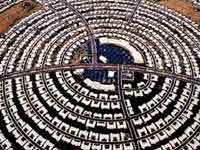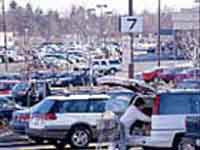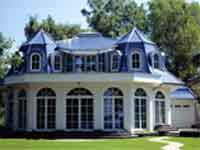 |
2. Urban Sprawl
The diverging terms used in the U.S. and in Germany shall briefly be introduced before defining "urban sprawl" as it is used in this paper since no commonly accepted term for development in the area surrounding cities exists. In the U.S., the development in the area surrounding cities is commonly termed as "urban sprawl": "It is a problem, that affects urban, suburban, and rural communities. The results of sprawl range from the loss of farmland to the decay of older urban centers."[Senville 1999] Simple definitions are hard to come by, because there is no clear-cut distinction between sprawl and suburbanization. It's hard to say exactly where sprawl begins and ends.[Schmidt 1998] There is no universal definition for the development in suburban areas surrounding German cities. The most commonly used terms are "dispersed settlement" and "surface consumption". Strategies with which one hopes to counteract the further spread of cities are termed "sustainable urban development" and do not constitute a separate research category. The term "urban sprawl" is used in the following to categorize the processes of suburbanization in the U.S. as well as in Germany. It is understood as follows: Sprawl is dispersed and low-density development outside of compact urban and village centers along highways and in rural countryside. Because of the low density of these settlements, cars are necessary in order to move. One of the most negative consequences of sprawl is the loss of land.
|
||||
 |
|||||
 |